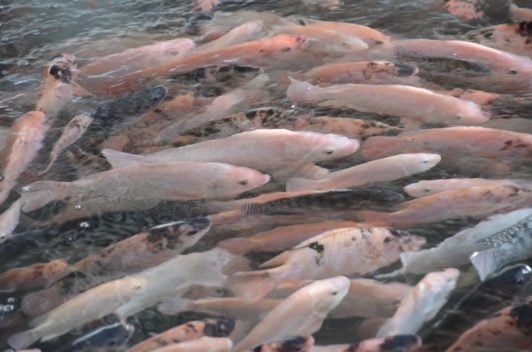If you've ever struggled with algae overgrowth in your pond, you're not alone. Many pond owners face unpleasant odors and declining water quality due to excess algae. While chemical treatments and filtration systems can help, there's a natural, low-maintenance solution that works wonders: tilapia.
These hardy, fast-growing fish are some of the most efficient algae eaters, capable of keeping your pond clear with minimal effort on your part. In this guide, we’ll explore why tilapia are the best fish for algae control, how to stock them properly, and what you can do to maximize their effectiveness.
Why Algae Overgrowth is a Problem
Algae is a normal part of any pond ecosystem, but too much can create serious issues:
- Oxygen Depletion – Algae blooms can choke out oxygen, leading to fish die-offs.
- Bad Odors – Rotting algae produces a foul smell that makes your pond unpleasant.
- Increased Maintenance – More algae means more time spent cleaning and managing water quality.
Instead of battling algae with chemical treatments, why not introduce a natural predator? That’s where tilapia come in.
Why Tilapia Are the Best Fish for Algae Control
1. Tilapia are Aggressive Algae Eaters
Tilapia actively seek out and consume filamentous algae, one of the most common and stubborn forms of algae in ponds. Unlike some fish that only nibble on algae as a secondary food source, tilapia thrive on it.
2. Fast Breeding for Ongoing Algae Control
One of the biggest advantages of tilapia is their ability to reproduce rapidly. A small initial stocking can quickly multiply into a thriving population that keeps algae levels in check all season long.
3. Low-Maintenance & Hardy
Tilapia require very little care beyond stocking them properly. They are highly adaptable and can tolerate a range of pond conditions, making them an excellent choice for both new and experienced pond owners.
4. Eco-Friendly Alternative to Chemicals
Many pond owners resort to chemical algaecides, but these can disrupt the natural balance of your pond, harming fish and other aquatic life. Tilapia provide a natural, sustainable solution that works with your pond’s ecosystem instead of against it.
How to Stock Tilapia for Maximum Algae Control
To get the best results, it's important to stock tilapia correctly based on your pond’s size and algae levels.
Tilapia Stocking Recommendations
For ponds with moderate algae coverage, we recommend stocking 10-15 lbs. per acre.If your pond is experiencing significant algae issues, or if you have bass in your pond, you might need to raise the stocking rate to 15-20 lbs. per acre. Tilapia also serve as excellent supplemental forage fish for largemouth bass due to their quick reproduction rates.
Water Temperature Considerations
Tilapia flourish in warm water (above 60°F), making them perfect for hotter regions. In North Texas, if you introduce tilapia, expect them to become lethargic as the water cools. They are likely to die off during the winter, meaning you'll have to do an annual restocking. On the bright side, you can catch them before winter and enjoy them in a fish fry!
Not sure how many tilapia you need? Contact our experts – Get a Free Stocking Plan
What to Expect After Adding Tilapia to Your Pond
-
Gradual Algae Reduction
Once stocked, tilapia will immediately begin consuming algae, though it may take a few weeks to notice significant changes. -
Seasonal Impact
Tilapia are most active in warm weather, so their algae-eating benefits are strongest in spring, summer, and early fall. -
Natural Pond Improvement
As tilapia consume algae, you'll notice clearer water, improved oxygen levels, and a healthier pond overall.
Don’t wait until algae takes over—contact Pond King to stock tilapia now!
Tilapia are one of the best and easiest ways to control algae in your pond. With their voracious appetite for algae, rapid reproduction, and low-maintenance care, they provide an eco-friendly alternative to chemical treatments.
If you're tired of battling algae and want a natural, effective solution, tilapia are the perfect choice! Contact us today to learn more.





